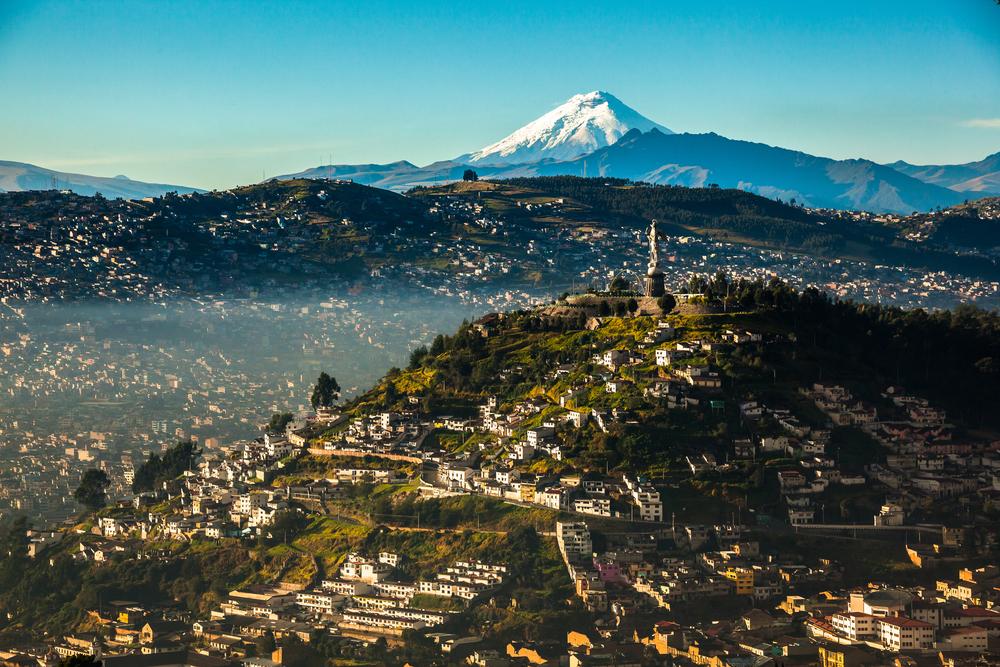So many foreign visitors who arrive in Ecuador spend next to no time in continental Ecuador, often merely overnighting between flights in its capital city of Quito. This is because their main destination is its Galapagos Islands, 836 miles from Quito, 563 miles from the coast of Ecuador west out in the Pacific Ocean.

The statue of the Virgin of El Panecillo overlooks the heart of Quito. Cotopaxi stands in the background. Ecuadorpostales/Shutterstock






